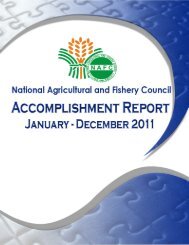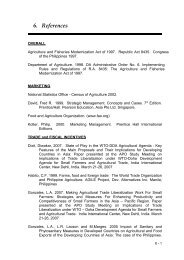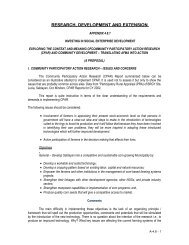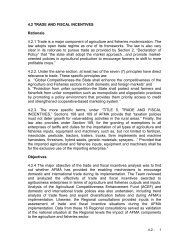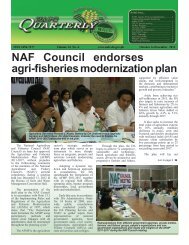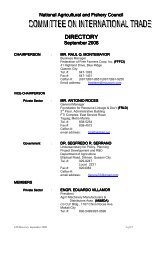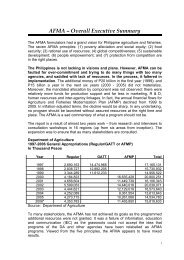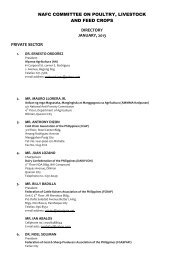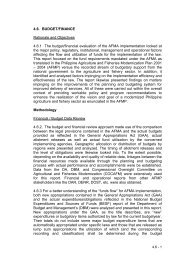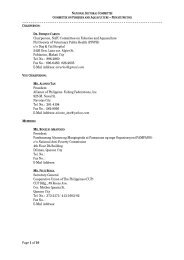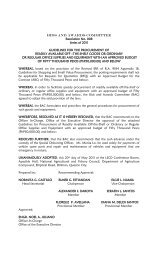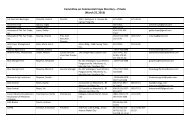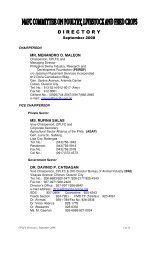5. Key Commodity Performance - National Agricultural and Fishery ...
5. Key Commodity Performance - National Agricultural and Fishery ...
5. Key Commodity Performance - National Agricultural and Fishery ...
You also want an ePaper? Increase the reach of your titles
YUMPU automatically turns print PDFs into web optimized ePapers that Google loves.
Competitiveness Analysis<br />
<strong>5.</strong>6.13 Mango is one of the leading fruit crop exports of the country. Mangoes<br />
coming from the major producing areas like Zambales, Guimaras <strong>and</strong><br />
Davao del Sur are generally competitive in export markets like Japan<br />
<strong>and</strong> Hong Kong in terms of both price <strong>and</strong> cost (UA&P Foundation,<br />
2000).<br />
<strong>5.</strong>6.14 Japan appeared to be the more attractive market especially for<br />
producers from Davao del Sur <strong>and</strong> Zamboanga since the derived export<br />
parity prices are relatively higher than domestic wholesale prices.<br />
Despite the high cost of transporting mangoes domestically, the<br />
premium prices offered by the Japanese market may have spelled the<br />
difference.<br />
SWOT Analysis<br />
<strong>5.</strong>6.15 The Philippine mango industry caters to both the domestic <strong>and</strong> export<br />
market. One of its strengths is that it could be produced year-round<br />
since there are already existing production technologies <strong>and</strong> at the same<br />
time, l<strong>and</strong> areas for expansion are available. In addition, it is regarded<br />
as one of the best varieties in the world. The country’s strategic location<br />
in Asia also gives the industry an advantage.<br />
<strong>5.</strong>6.16 The industry, however, is not without its weaknesses. These include<br />
the lack of quality (certified) planting materials – this is very critical<br />
considering that mango is a long-gestating crop; high cost of inputs<br />
such as fertilizers, flower inducers, <strong>and</strong> other chemicals; prevalence of<br />
backyard farms which contribute to low productivity, low quality <strong>and</strong> high<br />
post-harvest losses; lack of post-harvest facilities such as cold chain<br />
<strong>and</strong> vapor heat treatment facilities; high costs of transport; <strong>and</strong> the need<br />
to improve quality st<strong>and</strong>ards to meet especially the requirements in the<br />
export markets.<br />
<strong>5.</strong>6.17 There are also opportunities which the industry can tap. These include<br />
the untapped dem<strong>and</strong> particularly in the global market for both fresh <strong>and</strong><br />
processed products. The development of technologies for prolonging<br />
the fruit’s shelf life also offers possibilities of shipping to distant markets<br />
like the US <strong>and</strong> Europe.<br />
<strong>5.</strong>6.18 The threats, meanwhile, are posed mainly by increasing competition in<br />
the global market. Many countries are exp<strong>and</strong>ing their outputs such as Thail<strong>and</strong>,<br />
Cambodia, Viet Nam, China, Australia, Pakistan, Ivory Coast, Honduras <strong>and</strong> Haiti<br />
5- 46



